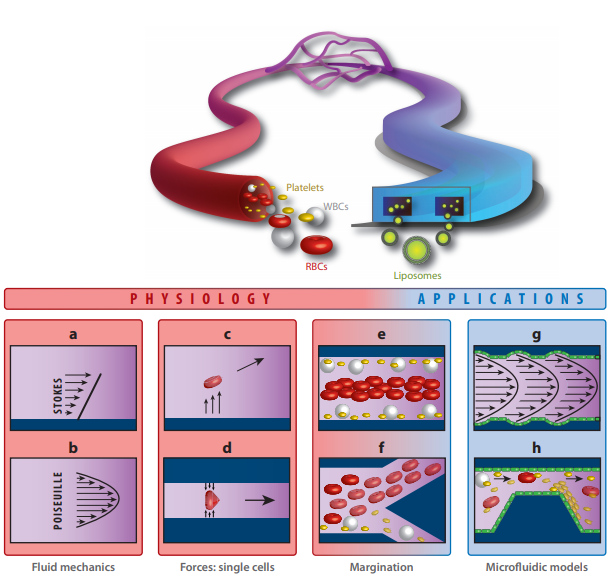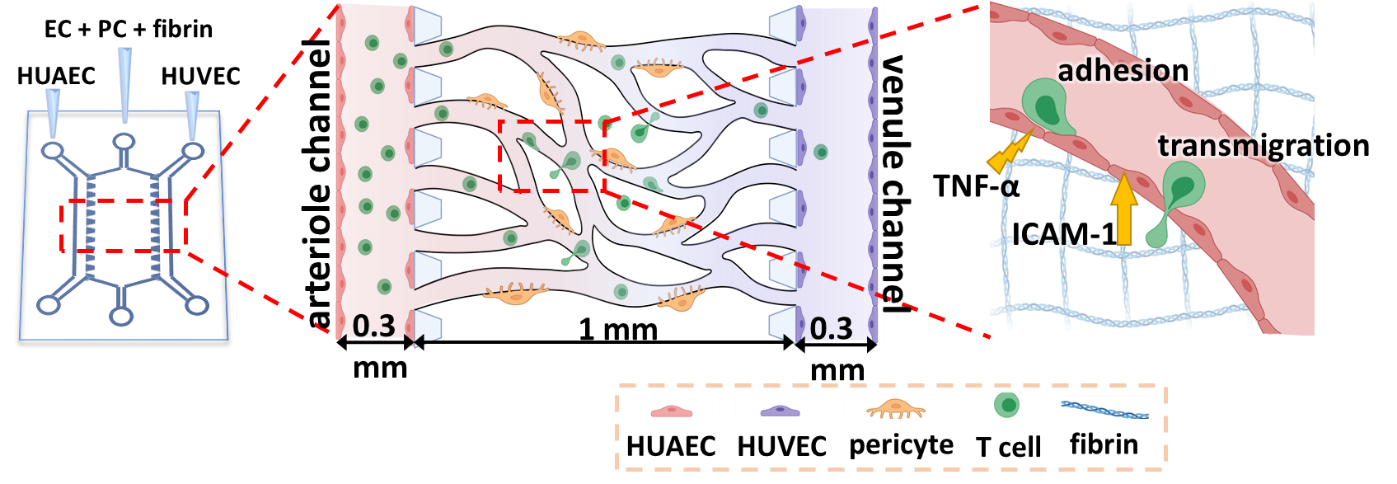Vessels-on-chip

In vitro capillary systems have aided the establishment of the fundamental laws of blood flow and its non-Newtonian properties for the last 50 years. The advent of microfluidics technology in the 1990s propelled the development of highly integrated lab-on-a-chip platforms that allow highly accurate replication of vascular systems’ dimensions, mechanical properties, and biological complexity. Applications include the detection of pathological changes to red blood cells, white blood cells, and platelets at unparalleled sensitivity and the efficacy assessment of drug treatment. Recent efforts have aimed at the development of microfluidics-based tests usable in a clinial environment or the replication of more complex diseases such as thrombosis. These microfluidic disease models enable the study of onset and progression of disease as well as the identification of key players and risk factors, which have led to a spectrum of clinically relevant findings.
Bernhard Sebastian and Petra S. Dittrich:
Microfluidics to Mimic Blood Flow in Health and Disease,
Annual Review of Fluid Mechanics 50, (2018), 483-504, external page link.
The vast majority of drugs is administered intravenously. One of the reasons is the thorough vascularization of each and every tissue independent of being diseased or healthy. Hence, the blood vessel system is an efficient transporting system for e.g. drugs. However, this circulatory system functions as a barrier as well for e.g. immune cells to get out of the blood stream and falsely invading a tissue (B. Sebastian 2018). With immunotherapy getting more and more into the focus of research, understanding the interaction between the endothelium and immune cells gets very important. Thus, we are currently developing microfluidic platforms that are aiming on understanding the human vasculature in the context of immunology better.
Selected references:
Bernhard Sebastian and Petra S. Dittrich:
Microfluidics to Mimic Blood Flow in Health and Disease,
Annual Review of Fluid Mechanics 50, (2018), 483-504, external page link.
